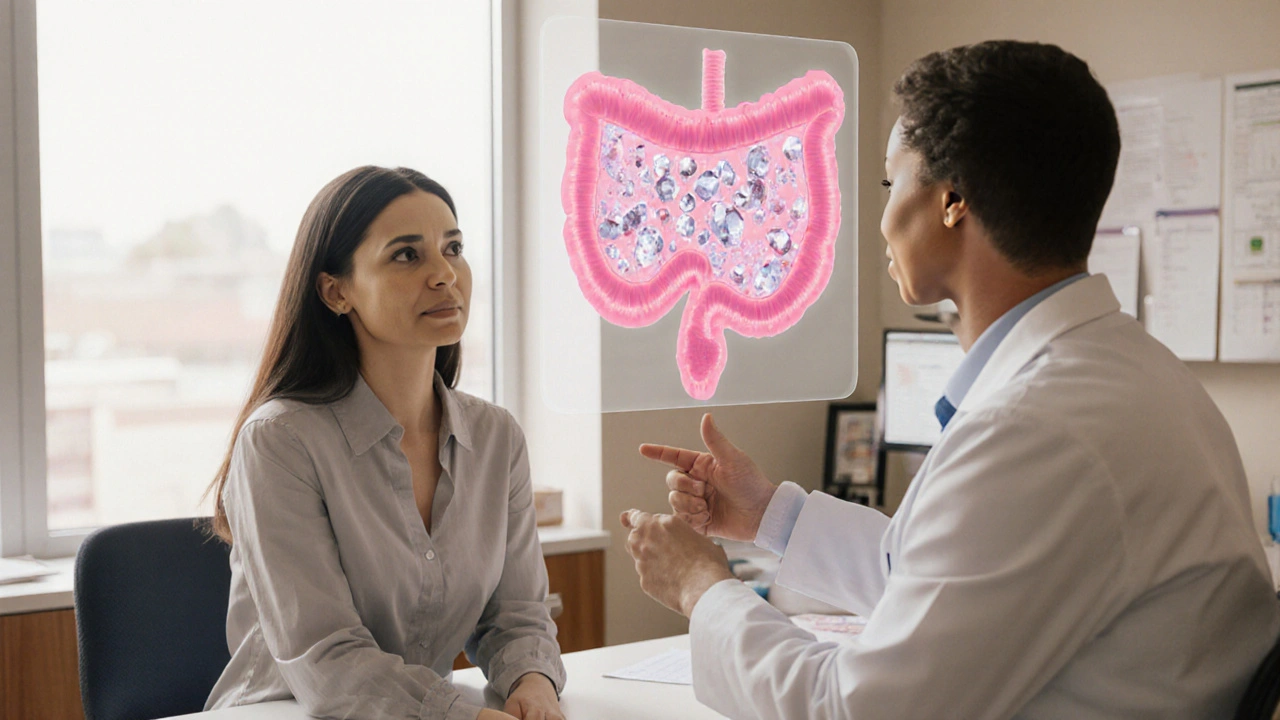Cystitis – Symptoms, Causes, Treatment & Prevention
When dealing with cystitis, inflammation of the bladder usually caused by bacterial infection. Also known as bladder infection, it can bring frequent urges, burning and discomfort.
A common trigger is an urinary tract infection, infection affecting any part of the urinary system. When bacteria travel up the urethra, they irritate the bladder lining, leading to cystitis. That’s why doctors often say cystitis encompasses bladder inflammation and requires targeted treatment.
What You’ll Feel and When to Seek Help
Typical signs include a strong, sudden need to urinate, a burning sensation during voiding, cloudy or foul‑smelling urine, and lower‑abdominal pressure. Some people notice blood‑tinged urine, which signals that the bladder lining is irritated. If symptoms persist beyond two days, get a fever, or feel flank pain, it’s time to see a clinician – these clues suggest the infection may be spreading.
Diagnosing cystitis is straightforward: a urine dip‑stick test checks for white blood cells and bacteria, and a culture confirms the offending strain. In most cases, the result points to antibiotics, prescribed medicines that kill the bacteria causing the infection. The choice of drug depends on the bacteria type and any resistance patterns.
For uncomplicated cystitis, a short three‑day course of trimethoprim‑sulfamethoxazole or nitrofurantoin often clears the infection. More resistant cases may need fluoroquinolones or a longer treatment plan. Always finish the full prescription, even if you feel better, to prevent relapse.
While antibiotics tackle the infection, they don’t stop future episodes. That’s where hydration, drinking enough fluids to keep the urinary tract flushed plays a crucial role. Aim for at least eight glasses of water a day; the more you pee, the less chance bacteria have to settle.
Other lifestyle tweaks lower cystitis risk: urinate soon after sex, wipe front‑to‑back, avoid irritating feminine products, and wear breathable underwear. Cranberry juice has mixed evidence, but many people find it helps by preventing bacteria from sticking to bladder walls.
In recurrent cases – three or more episodes a year – doctors may suggest a low‑dose prophylactic antibiotic taken after intercourse or daily for a few months. A urine culture helps pick the most effective agent and reduces unnecessary antibiotic exposure.
Older adults and people with diabetes often experience atypical symptoms, such as confusion or lack of pain. For them, any change in urinary habits warrants prompt evaluation because complications can rise quickly.
When cystitis links to a structural issue, like kidney stones or a blocked catheter, addressing the root cause is essential. Imaging tests or urodynamic studies identify blockages, and surgical or procedural interventions may be needed.
Bottom line: cystitis is a common, treatable bladder inflammation, but it thrives on missed prevention steps. By recognizing early symptoms, completing antibiotic courses, staying well‑hydrated, and practicing good hygiene, most people keep it from returning.
The articles below dive deeper into each of these areas – from detailed symptom checklists to the latest antibiotic guidelines and practical prevention tips. Keep reading to arm yourself with the knowledge you need for a healthier urinary tract.
How Cystitis Leads to Bladder Stones - Causes, Risks & Prevention
Explore how cystitis can trigger bladder stones, the shared risk factors, diagnosis overlap, and practical steps to prevent both conditions.
